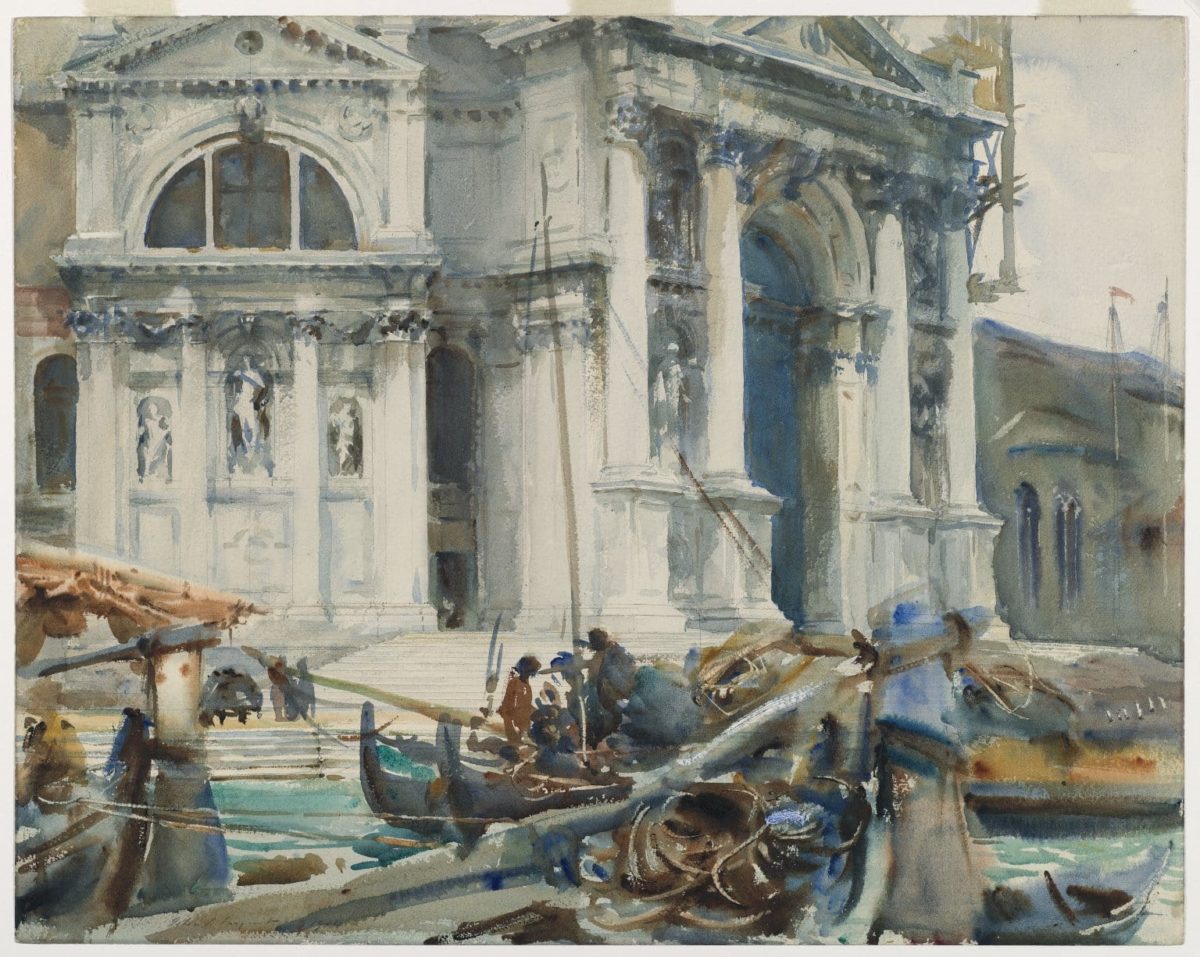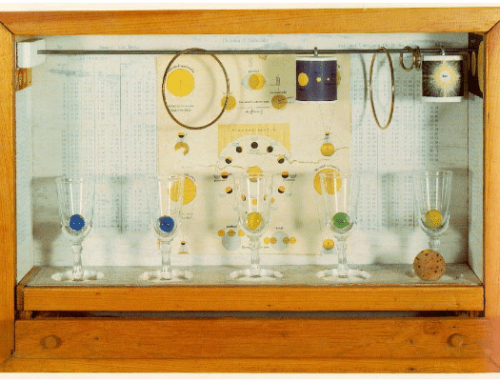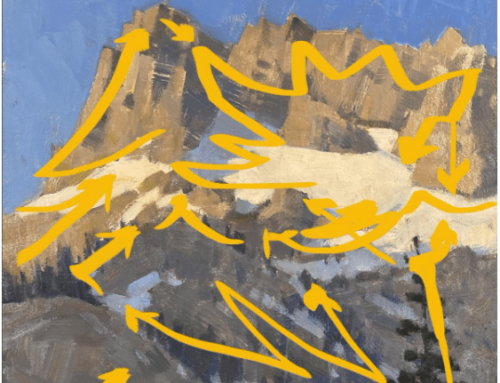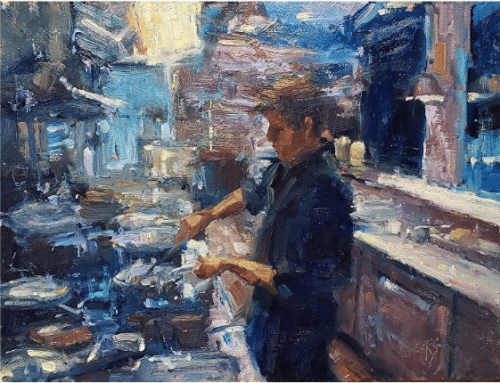John Singer Sargent’s watercolors are amazing for any number of things – ingenious, original compositions, unusual and often “exotic” subject matter, their virtuoso, distinctly Sargentian paint handling and color work.
Sargent mastered the intricate mysteries of painting white on white. A major key to painting white on white is temperature, and this is frequently talked about in reference to rendering snow. You don’t paint snow white, goes the prevailing wisdom; you paint it warm (tinged with tiny amounts of yellow where the sun’s hitting it), and cool (shaded with subtle variations of blue or violet) where it’s in shadow. Things are a bit more complicated in Sargent, but the rule of thumb does provide a way in.
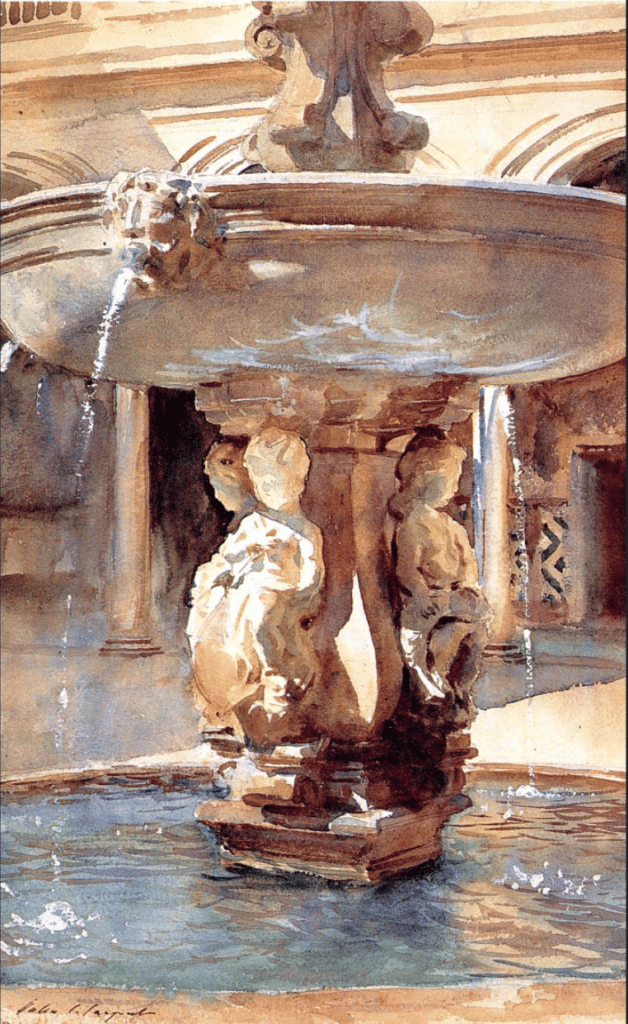
What a tour de fore is this watercolor of a fountain in a place in Spain! Areas of sunlit stone, stone in shadow, stone recieving ambient (reflected and dispersed) light, and even reflecting the light bouncing off the surface of the water, which itself is a reflecting light, sky, and stone! Just getting the values right would be difficult enough.
But the use of intricately varied warm and cool coloration is surely involved here too. Sargent nails most of these myriad variations of light and shadow through alternating warm for sunlit, cool for shadow, and but it’s really about picking out select edges and shapes with just the right relative lightness or darkness. For the most part color is beautifully restrained by a considerably limited palette.
How about this study for his marvelous painting alternately known as “Incensing the Veil,” “Smoke of Ambergris,” or just “Ambergris”? The title(s) refers to the use of a rare and precious substance derived in small quantities from the bodies of whales which perfumers throughout the ages have prized for its potent and delightful scent.
Sargent’s picture shows a Moroccan woman in white beneath white stone architecture perfuming herself by capturing the fumes of burning ambergris incense with a veil.
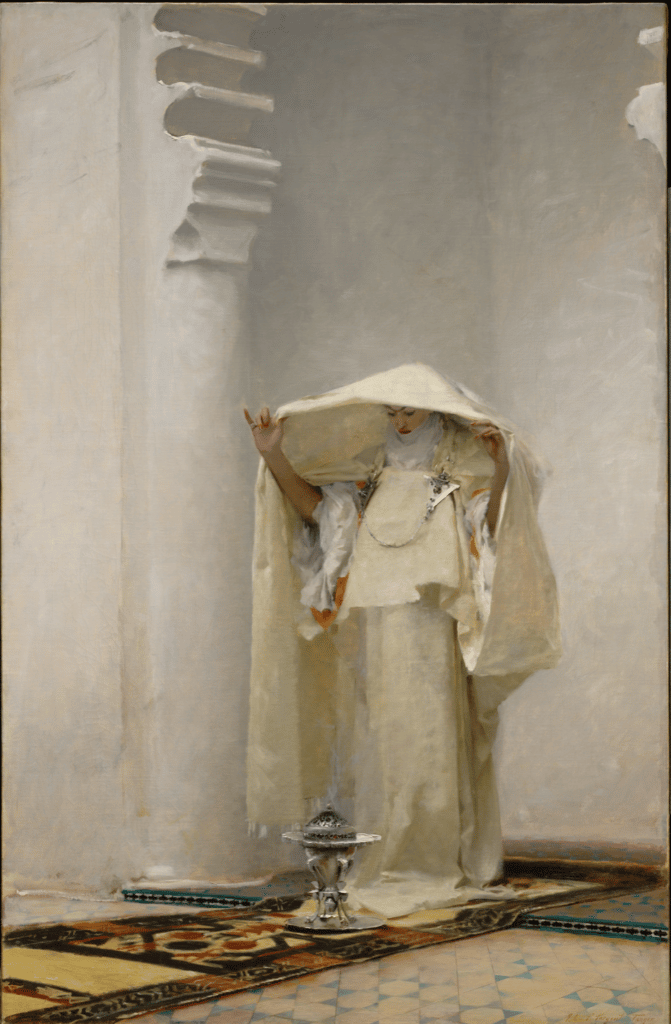
John Singer Sargent, Fumée d’ambre gris (Smoke of Ambergris), 1880, Oil on canvas. Acquired by Sterling Clark, 1914. The Clark Art Institute, 1955.15.
Below is the original watercolor, presumably made en plein air or shortly after seeing the scene in real life. The rendering in the final oil painting (above) is imaginative and masterful – but comparison with the watercolor study (below) shows Sargent is largely “making up” all that amazing white-on-white handling of the warm/cool lit and shadowed architecture and drapery.
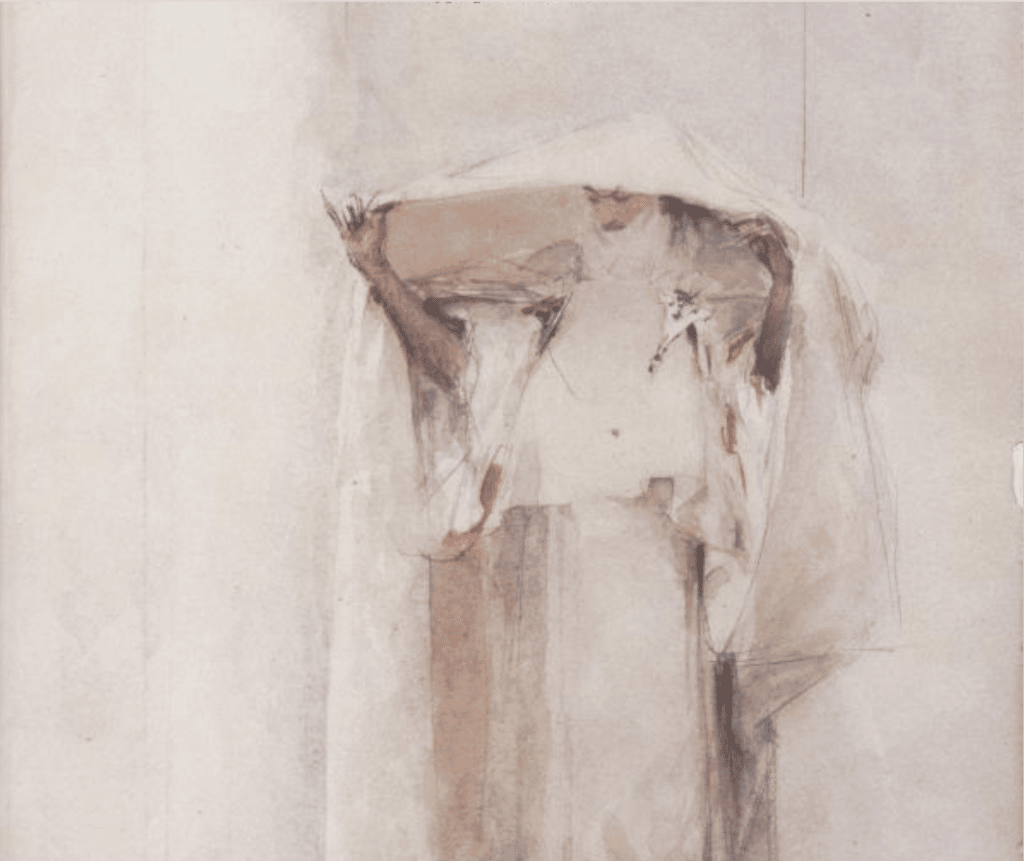 This is the top half of the plein-air watercolor sketch. The watercolor includes some of the same details – but not the architecture. That’s how we know Sargent constructed the larger oil’s white-on-white, warm/cool light and shadow in the architecture through some mix of imagination and memory.
This is the top half of the plein-air watercolor sketch. The watercolor includes some of the same details – but not the architecture. That’s how we know Sargent constructed the larger oil’s white-on-white, warm/cool light and shadow in the architecture through some mix of imagination and memory.
Sargent’s secret weapon is an absolutely precise eye for values. Getting the values dead right enables any variety of colors and temperatures, and that’s what carries the work over the finished line.
Handling Architecture in Watercolor
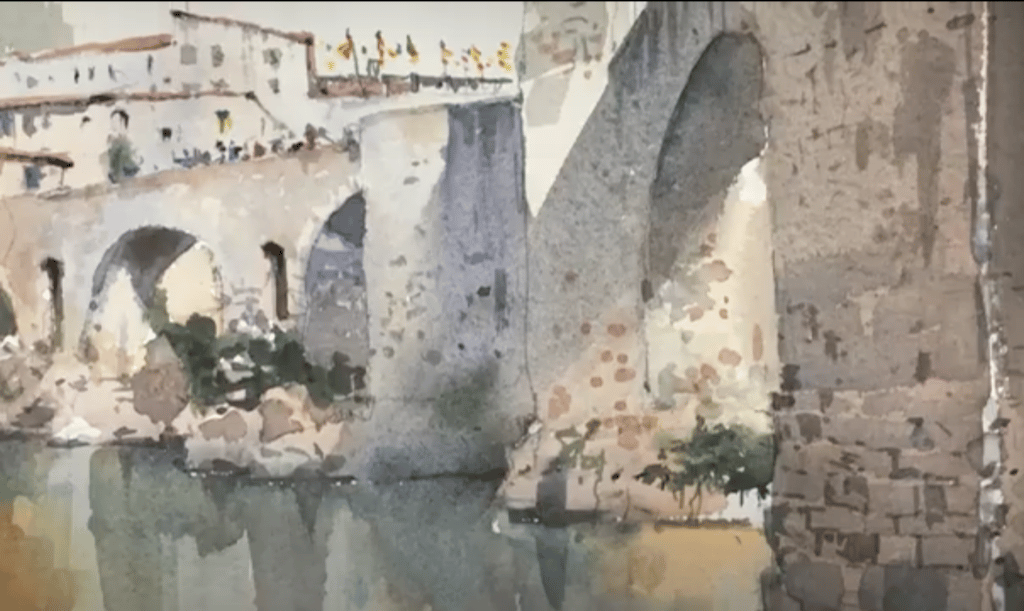
What holds many painters back from taking architecture as their subject is forgetting that “the main reason for painting architecture is painting the light,” says renowned watercolorist Stewart White, who’s especially known for his masterful and elegant architectural watercolors, including plenty in white on white.
Painters looking to create great renderings of beautiful architecture would do well to look past the intimidating prospects of challenging details, geometric angles, and proportions in perspective, he says, and simplify the visually complex by concentrating on the quality of the lights and the shadows.
Stewart demonstrates the surprisingly straightforward and relatively easy methods he uses to the correct geometry taken care of so he can allow the light to make his paintings shine in his video Painting Architecture in Watercolor.
Visit EricRhoads.com (Publisher of INSIDE ART) to learn about opportunities for artists and art collectors, including: Art Retreats – International Art Trips – Art Conventions – Art Workshops (in person and online) – And More!

